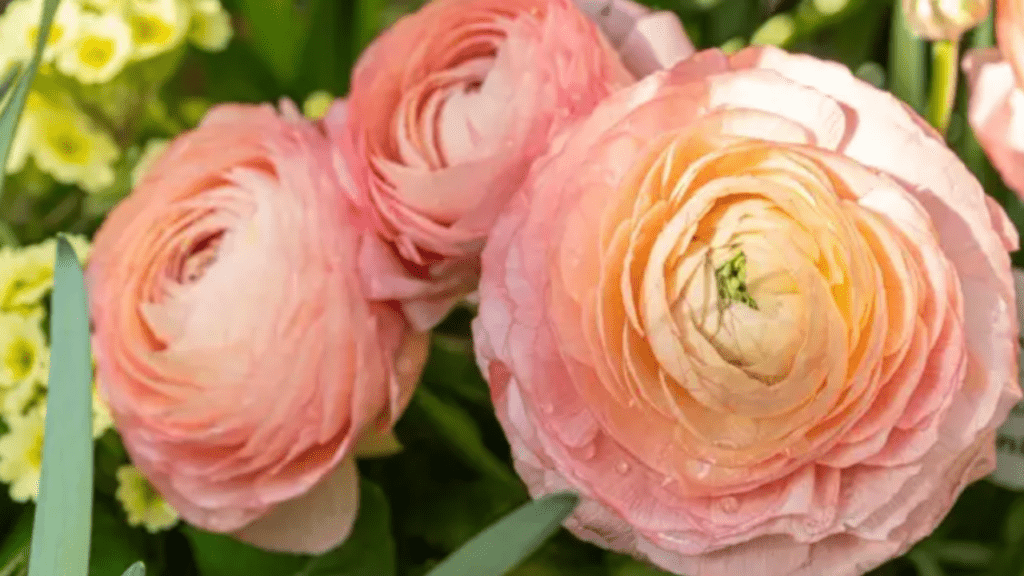
Top Tips for Growing Healthy Persian Buttercup Plants
Growing healthy Persian Buttercup plants can be a rewarding and enjoyable experience for any gardener. These beautiful flowers, also known as Ranunculus, are prized for their vibrant colors and delicate, rose-like blooms. In this post, we’ll share expert tips and advice on how to successfully grow and care for Persian Buttercup plants, whether you’re a beginner or an experienced gardener. From planting and watering to fertilizing and pest control, we’ll cover all the essential steps to ensure your plants thrive and bloom beautifully. So, let’s get started on cultivating a stunning garden filled with healthy Persian Buttercup plants.
Table of Contents
ToggleUnderstanding Persian Buttercup Plants
The Persian Buttercup, also known as Ranunculus, is a beautiful and delicate flower that is prized for its vibrant colors and rose-like blooms. These plants thrive in cool climates and can be grown in containers or in the ground. They prefer full sun to partial shade and well-drained soil. When planting Persian Buttercup plants, it’s important to water them regularly, but avoid overwatering as this can cause the bulbs to rot. Fertilize the plants with a balanced fertilizer every 4-6 weeks to promote healthy growth and abundant blooms. Keep an eye out for pests such as aphids and spider mites, and treat them promptly to prevent damage to the plants. With proper care and attention, Persian Buttercup plants can bring a touch of elegance and beauty to any garden.
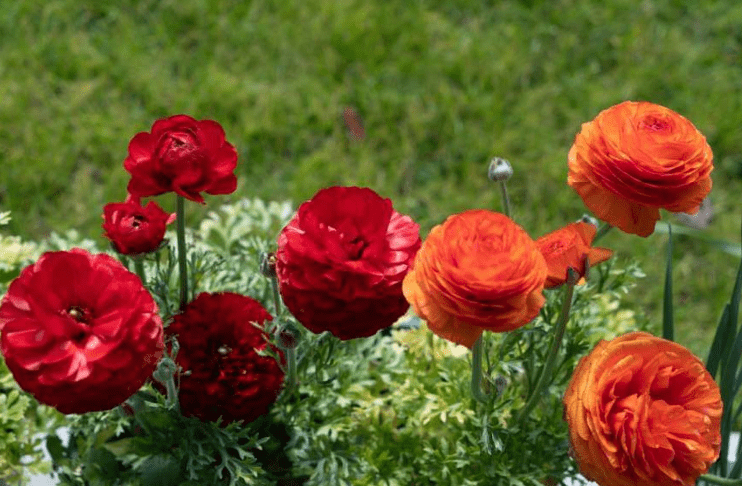
Ideal Growing Conditions
Sunlight Requirements: Explain the amount of sunlight Persian buttercup plants need to thrive.
Persian Buttercup plants thrive in full sun to partial shade. They need at least 6-8 hours of sunlight each day to thrive and produce vibrant, colorful blooms. If they don’t receive enough sunlight, they may become leggy and have fewer flowers. It’s important to plant them in a location where they will receive the right amount of sunlight for optimal growth. In hotter climates, they may benefit from some afternoon shade to protect them from the intense heat of the sun. Providing the right amount of sunlight is crucial for the health and vitality of Persian Buttercup plants.
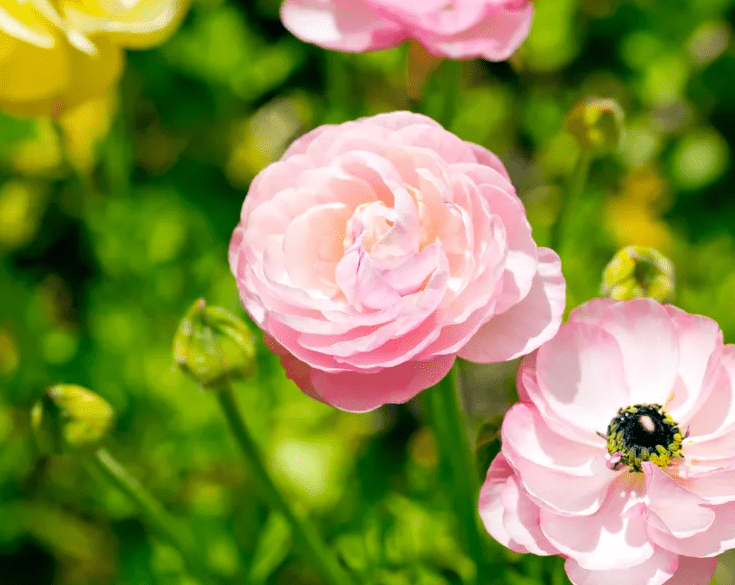
Soil Preferences: Discuss the best soil types, pH levels, and drainage needs for optimal growth.
When it comes to soil preferences for Persian Buttercup plants, it’s important to choose well-draining soil that is rich in organic matter. A sandy loam soil with a pH level of 6.0-7.0 is ideal for optimal growth. This type of soil allows for good drainage while also retaining enough moisture for the plant to thrive. If the soil is too compacted or has poor drainage, it can lead to root rot and other issues. Adding compost or organic matter to the soil can help improve its texture and fertility, providing a better environment for Persian Buttercup plants to grow. It’s also important to avoid soil that is too acidic or alkaline, as this can impact the plant’s ability to absorb nutrients from the soil. By ensuring the right soil conditions, you can help your Persian Buttercup plants to flourish and produce stunning, vibrant blooms.

Climate Considerations: Highlight the preferred climate zones and how to grow Persian buttercups in different environments.
Persian buttercup plants thrive in a Mediterranean climate, with mild winters and hot, dry summers. They prefer full sun and well-draining soil, making them well-suited to regions with long, warm growing seasons. In cooler climates, they can be grown as annuals or in containers that can be moved indoors during the winter months. When planting Persian buttercups in a cooler climate, it’s important to ensure that they receive plenty of sunlight and are protected from strong winds. In warmer climates, it’s essential to provide adequate water and provide some shading during the hottest part of the day to prevent the plants from wilting. Overall, Persian buttercup plants can adapt to a range of climates but thrive best in regions with Mediterranean-like conditions. With the right care and attention to soil and climate considerations, these beautiful flowers can be grown successfully in a variety of environments.
Planting Persian Buttercup Bulbs
Choosing Quality Bulbs: Offer tips on selecting healthy bulbs for planting.
When you are selecting bulbs for planting Persian buttercups, it is important to choose high-quality bulbs that are healthy and free from any signs of disease or damage. Look for bulbs that are firm and plump, with no soft spots or mold. It is also a good idea to choose bulbs that are larger in size, as they will generally produce larger and more robust plants. Additionally, check for bulbs that have a good amount of stored energy, as this will help them to establish and grow quickly once planted. When selecting bulbs, it is important to choose ones that are suited to your specific climate and growing conditions. Some bulbs may be better suited to cooler climates, while others may thrive in warmer regions. It is also important to consider the planting depth and spacing requirements for the specific type of bulb you are planting. Following these tips for selecting quality bulbs will help to ensure that your Persian buttercup plants get off to a healthy and strong start.
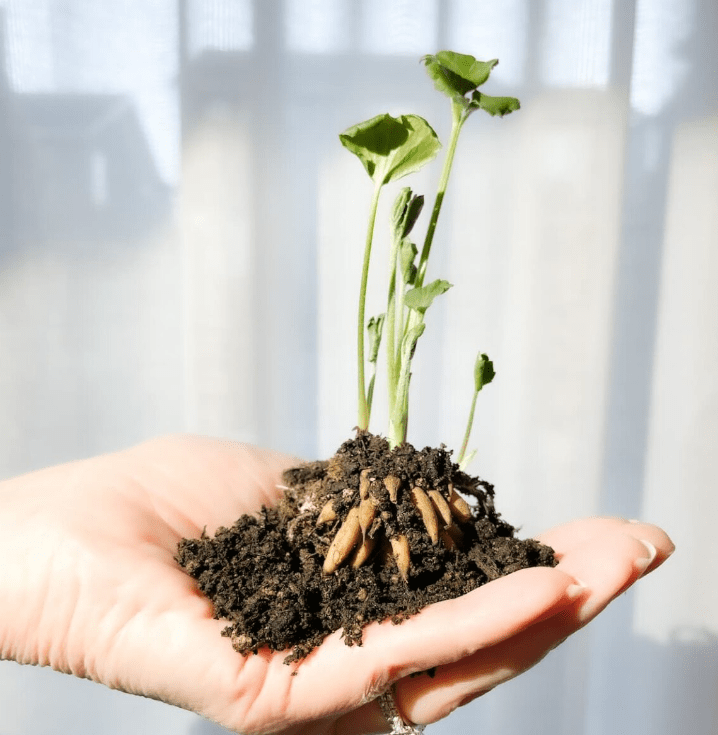
Planting Time: Discuss the best time of year to plant Persian buttercup bulbs based on your climate.
The best time to plant Persian buttercup bulbs can vary depending on your climate. In colder climates with harsh winters, it is best to plant the bulbs in the fall, just before the ground freezes. This allows the bulbs to establish themselves and develop roots before the winter sets in. In milder climates, where winters are not as severe, the bulbs can be planted in late fall or early winter. It is important to plant the bulbs before the ground becomes too cold and hard for them to take root.
In warmer climates, where winters are mild, the bulbs can be planted in late winter or early spring. This allows them to avoid any potential damage from frost and gives them a chance to establish before the weather warms up.
Regardless of your climate, it is important to choose a planting time when the soil is well-drained and not waterlogged. This will help prevent the bulbs from rotting.
By planting Persian buttercup bulbs at the right time for your climate, you can ensure that they have the best chance of thriving and producing beautiful blooms.
Planting Depth and Spacing: Provide guidelines on how deep to plant the bulbs and the proper spacing between them.
When planting Persian buttercup bulbs, it’s important to consider the planting depth and spacing to ensure they grow successfully. The general rule of thumb is to plant the bulbs three times as deep as the bulb is tall. For example, if a bulb is 2 inches tall, it should be planted at a depth of 6 inches. This will help the bulb establish a strong root system and anchor itself in the soil. As for spacing, bulbs should be planted about 4-6 inches apart to give them enough room to grow and spread out. This spacing allows for good air circulation and prevents overcrowding, which can lead to disease and poor growth. Following these guidelines will help you plant your Persian buttercup bulbs in the best way possible for a beautiful and successful display of blooms.
Watering and Fertilizing Persian Buttercups
Watering Guidelines: Explain how often and how much to water Persian buttercup plants to keep them healthy.
Persian buttercup plants thrive in well-drained soil and should be watered regularly to keep the soil consistently moist, but not waterlogged. It’s best to water the plants deeply once a week, providing enough water to reach the root zone. During periods of hot and dry weather, you may need to increase the frequency of watering to ensure the soil stays moist. It’s important to monitor the soil moisture and adjust your watering schedule accordingly. Avoid overwatering, as this can lead to root rot and other problems. Additionally, it’s a good idea to water the plants in the morning to reduce the risk of fungal diseases. When it comes to fertilizing, Persian buttercups benefit from a balanced fertilizer applied in early spring as the plants emerge from dormancy. Follow the instructions on the fertilizer label for the proper application rate and method. With the right watering and fertilizing routine, you can help your Persian buttercup plants stay healthy and vibrant.
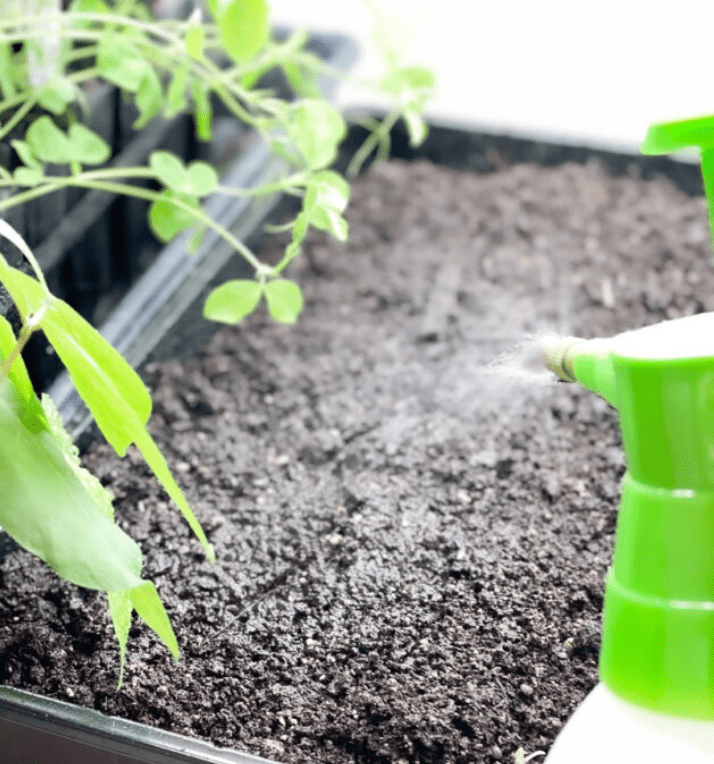
Fertilization Tips: Recommend the best fertilizers and feeding schedule for Persian buttercups.
Persian buttercups thrive in well-draining soil and prefer to be kept consistently moist, especially during hot and dry weather. It’s important to monitor the soil moisture and adjust your watering schedule accordingly to ensure the soil stays moist without overwatering, which can lead to root rot. Watering the plants in the morning is recommended to reduce the risk of fungal diseases.
When it comes to fertilizing Persian buttercups, a balanced fertilizer applied in early spring as the plants emerge from dormancy is beneficial. It’s important to follow the instructions on the fertilizer label for the proper application rate and method. This will provide the necessary nutrients for healthy growth and vibrant blooms.
By following a proper watering and fertilizing routine, you can help your Persian buttercup plants stay healthy and vibrant throughout the growing season. With the right care, your Persian buttercups will thrive and reward you with beautiful blooms.
Mulching: Discuss the benefits of mulching around the plants for moisture retention and weed control.
Mulching around plants has numerous benefits, including moisture retention and weed control. A layer of mulch helps to retain moisture in the soil, reducing the need for frequent watering. This is especially beneficial during hot and dry weather conditions. Mulch also helps to suppress weed growth by blocking sunlight and preventing weed seeds from germinating. This reduces the need for tedious and time-consuming weed control efforts. Additionally, mulch acts as a protective barrier, insulating the soil and regulating its temperature, which is beneficial for the roots of plants. It also helps to prevent soil erosion and compaction. Overall, mulching around plants is an effective way to promote healthy and thriving garden beds.
Caring for Persian Buttercup Plants During Growth
Staking and Support: Explain when and how to stake Persian buttercup plants to prevent damage from wind or rain.
Persian buttercup plants, also known as ranunculus, may need staking and support to prevent damage from wind or rain. It is best to stake these plants early in their growth stages, especially when they start to produce flower buds. Use small stakes or garden twine to gently support the stems and prevent them from bending or breaking in windy conditions. Be sure to tie the stems loosely to avoid damaging the plant. Additionally, you can use plant supports or cages to help support the plant and keep it upright. It’s important to check the plants regularly and adjust the stakes or supports as needed to ensure the plants are adequately supported. By providing proper staking and support, you can help your Persian buttercup plants stay healthy and strong, even during challenging weather conditions.
Pruning and Deadheading: Offer advice on how to prune and deadhead the plants to encourage more blooms.
Pruning and deadheading are important tasks to encourage more blooms and promote the overall health of your plants. When it comes to pruning Persian buttercup plants, it’s important to remove any dead or damaged foliage to allow for new growth. Use clean, sharp pruning shears to make clean cuts at a 45-degree angle to promote healing and prevent disease. You can also trim back any overgrown or unruly stems to maintain a more compact and tidy appearance.
Additionally, deadheading, or removing spent flowers, is essential to encourage continuous blooming. This process redirects the plant’s energy from seed production back into flower production. As the flowers begin to fade, simply snip them off at the base of the stem to promote new growth and prolong the blooming period.
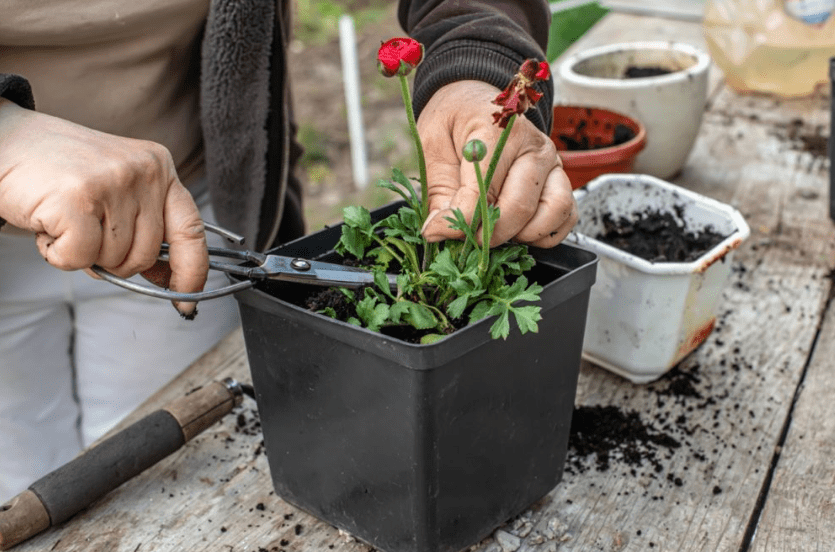
It’s important to regularly check your plants for any signs of disease or pest infestation and promptly address any issues that arise. By practicing proper pruning and deadheading techniques, you can help your Persian buttercup plants thrive and produce an abundance of beautiful blooms.
Protecting Persian Buttercup Plants from Pests and Diseases
Common Pests: Identify pests that commonly affect Persian buttercups and how to prevent them.
When it comes to pest and disease prevention for Persian buttercups, there are a few common pests to be aware of. Aphids and spider mites are two of the most common pests that can affect these plants. To prevent infestations, it’s important to regularly inspect your plants for any signs of pests and promptly address any issues that arise. Additionally, using insecticidal soaps or neem oil can help control and prevent pest infestations on your Persian buttercup plants. In terms of disease prevention, proper pruning and deadheading techniques can help promote overall plant health and minimize the risk of disease. Making clean cuts at a 45-degree angle with sharp, clean pruning shears can promote healing and prevent disease. Removing spent flowers through deadheading is also essential for encouraging continuous blooming and redirecting the plant’s energy back into flower production. By practicing these preventive measures, you can help your Persian buttercup plants thrive and minimize the risk of pest and disease infestations.
Disease Management: Discuss common diseases and how to treat or prevent them.
Disease management is an important aspect of plant care, especially when it comes to preventing and treating common diseases that can affect your plants. Aphids and spider mites are two of the most common pests that can affect plants like Persian buttercups. It’s important to regularly inspect your plants for any signs of pests and promptly address any issues that arise to prevent infestations. Using insecticidal soaps or neem oil can also help control and prevent pest infestations on your plants. In terms of disease prevention, proper pruning and deadheading techniques can help promote overall plant health and minimize the risk of disease. Making clean cuts at a 45-degree angle with sharp, clean pruning shears can promote healing and prevent disease. Removing spent flowers through deadheading is also essential for encouraging continuous blooming and redirecting the plant’s energy back into flower production. By practicing these preventive measures, you can help your plants thrive and minimize the risk of pest and disease infestations.
Overwintering Persian Buttercup Plants
Is an important aspect of plant care, especially in colder climates. In order to protect your plants during the winter months, it’s important to make sure they are well-prepared for the cold weather. One of the key things to keep in mind is to provide adequate mulch around the base of the plants to protect the roots from freezing temperatures. Additionally, you can consider using a frost cloth or other protective covering to shield the plants from harsh weather conditions. It’s also important to water your plants sparingly during the winter to prevent them from becoming waterlogged in the cold, wet soil. By taking these precautions, you can ensure that your Persian buttercup plants survive the winter and thrive once the warmer weather returns.
Conclusion
In conclusion, growing healthy Persian Buttercup plants requires attention to detail and consistent care. Make sure to provide them with the right amount of sunlight, water, and nutrients, and be mindful of any pests or diseases that may affect them. By following these expert tips, you can ensure that your Persian Buttercup plants thrive and bloom beautifully in your garden.
Frequently asked questions And Answer
Persian buttercup plants thrive in well-draining, fertile soil with a slightly acidic pH. It’s important to ensure the soil is rich in organic matter to promote healthy growth.
These plants prefer full sunlight, so it’s best to place them in a location where they can receive at least 6-8 hours of direct sunlight per day.
It’s important to keep the soil consistently moist but not waterlogged. Water the plants when the top inch of soil feels dry to the touch, and be sure to water at the base of the plant to avoid getting the foliage wet.
Yes, these plants can benefit from a balanced, water-soluble fertilizer applied every 4-6 weeks during the growing season. Be sure to follow the instructions on the fertilizer package for the correct application rate.
Keep an eye out for common pests such as aphids and spider mites, and treat any infestations promptly. Additionally, providing good air circulation and avoiding overhead watering can help prevent fungal diseases.
Yes, Persian buttercup plants can be grown in containers as long as the containers have drainage holes and the plants receive adequate sunlight and water. Be sure to choose a well-draining potting mix and water the plants more frequently than those grown in the ground.
Plant Persian buttercup bulbs in the fall, around 4-6 weeks before the first frost. This will give the bulbs time to establish roots before the cold weather sets in.
To prolong the blooming period, deadhead spent flowers regularly to encourage the plant to produce more blooms. Additionally, providing consistent care, including proper watering and fertilization, will help promote continuous flowering.
